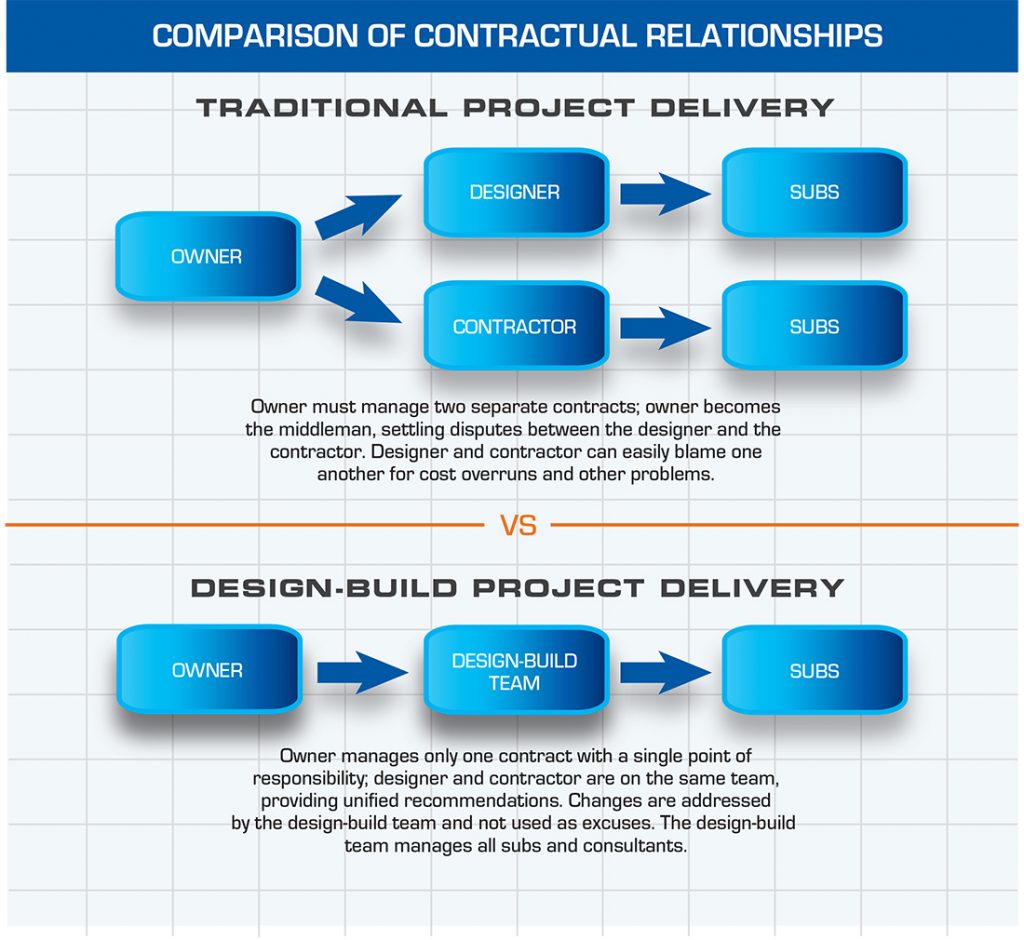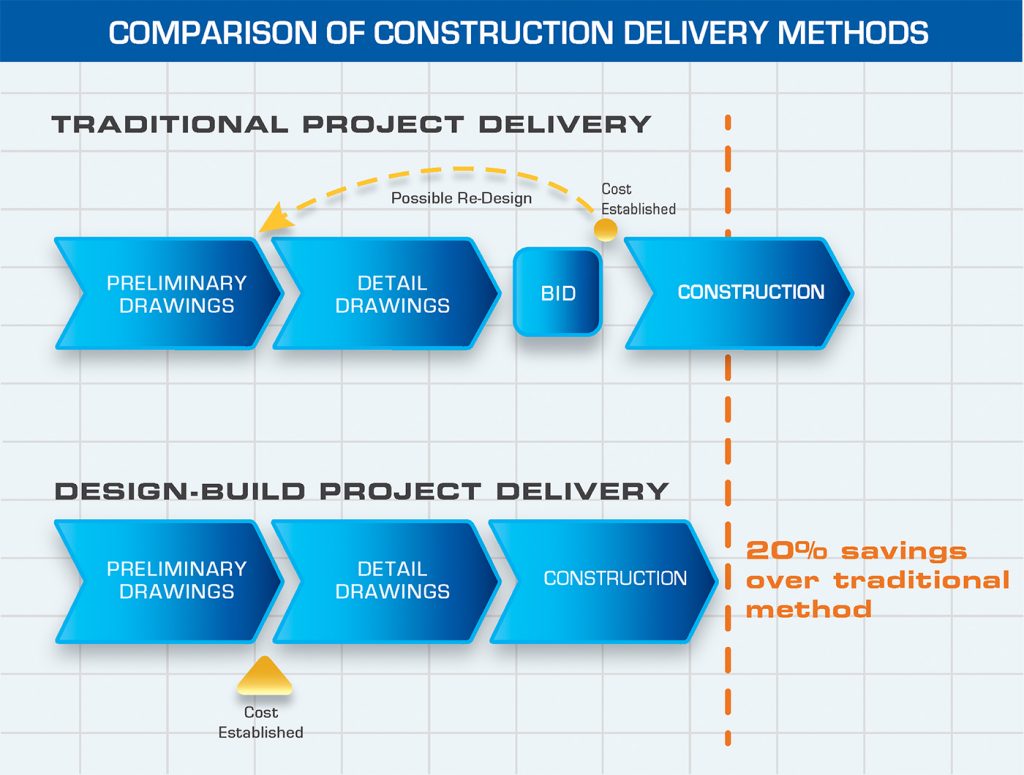Design-build is a straight forward approach to construction that is modeled after the master builders of the past. The design-builder has single source responsibility for the design and construction of the project to best meet the owner’s objectives.
Design-build allows for open communication and collaboration from the very beginning of a project.
Owners can sit at the same table with the architects, builders, engineers and estimators to discuss project requirements, design, and costs.
Key Benefits of the Design-Build Method:
- Single-Point Responsibility: In design-build projects, you deal with a single entity—the design-builder—responsible for both design and construction. This ensures streamlined communication and accountability, eliminating the need to coordinate between multiple contractors and designers.
- Faster Project Delivery: Design-build projects often progress more swiftly than traditional design-bid-build projects because design and construction activities can overlap. This overlapping can significantly shorten project timelines, proving invaluable for time-sensitive projects.
- Cost Savings: Design-build frequently results in cost savings as the contractor provides input during the design phase to optimize construction methods, materials, and costs. Early, more accurate cost estimates help reduce the risk of budget overruns.
- Enhanced Collaboration: Design-build fosters collaboration among team members—architects, engineers, and contractors—from project inception. This encourages innovation and effective problem-solving, leading to superior project outcomes.
- Quality Control: With design-build, the design-builder oversees the project’s quality from start to finish, contributing to improved quality control. The vested interest in delivering a high-quality final product ensures meticulous attention to detail.
- Reduced Administrative Burden: Owners often find design-build projects reduce their administrative burden, offering a single point of contact for all project-related matters. This simplifies decision-making and communication.
- Risk Management: Design-build can shift more project risk from the owner to the design-builder, limiting exposure to unforeseen issues or delays. This aspect is particularly advantageous in risk-averse scenarios.
- Flexibility: The design-build approach is adaptable to various project types and sizes. Its flexibility proves especially effective for complex or specialized projects requiring close collaboration between design and construction.
- Streamlined Change Orders: In design-build, change orders are minimized and easier to manage. The design-builder’s intimate familiarity with the project allows for efficient adjustments.
- Single-Source Accountability: During construction, the owner has a single entity to turn to for solutions and accountability in design-build. This simplifies dispute resolution and claims management.
The following informative article from ![]() describes the two primary construction partnership arrangements and is a great resource for those preparing to build a new commercial project. https://www.procore.com/library/construction-partnerships
describes the two primary construction partnership arrangements and is a great resource for those preparing to build a new commercial project. https://www.procore.com/library/construction-partnerships
In summary, design-build construction offers efficiency, cost savings, collaboration, and risk management advantages, making it the preferred choice for many projects. However, project success depends on selecting an experienced and qualified design-build team. Reach out to The Cornerstone Company to discuss our qualifications and how we can contribute to your project.



